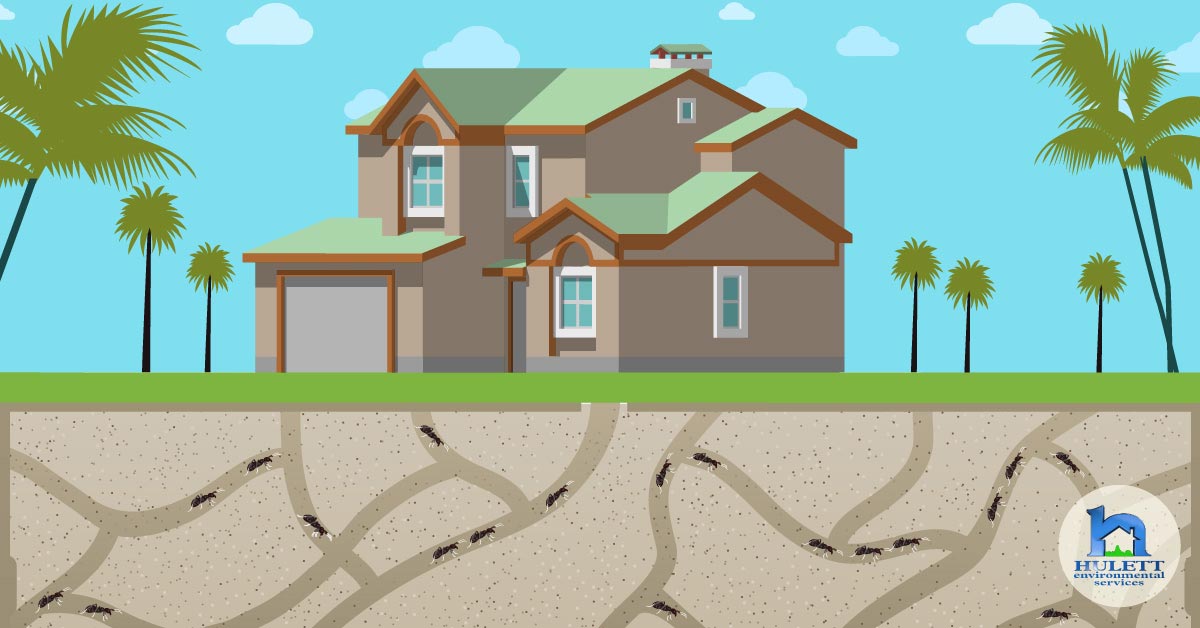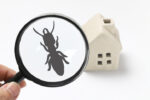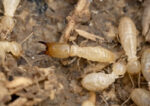
Ant Spotlight: White-Footed Ants
Another pesky ant that persists in annoying South Florida homeowners, the white-footed ant, an “old-world” species is often confused with other ants, such as Argentine and crazy ants. The white-footed ant, a nuisance pest in South Florida, fortunately does not sting, bite, or possess powerful mandibles that would cause structural damage. So, what’s the problem? Well, the problem seems to be that white-footed ant populations can number 3 million members and that is a lot of ants foraging around in your kitchen, surprising you in your bathroom and just basically irritating homeowners by foraging up exterior walls and into your home in search of sweet things to eat.
White-footed ants can present bigger problems for agriculture
This farmer’s nightmare is a medium-small, black-brownish colored ant with yellowish-white feet, white-footed ants have a single segmented waist and measure 2.5mm in length. These small ants can be fierce defenders of their food sources, preferring sweet plant nectars and honeydew produced by many sap-sucking insects, such as mealy-bugs, scale and aphids, these white-footed ants protect these sap-sucking insects, causing big problems for commercial greenhouses by negatively affecting the imported exotic orchid and fruit markets. White-footed ants were first collected in 1986 at a nursery in Homestead, Florida. By 2002 white-footed ants had spread to Brevard, Broward, Collier, Miami-Dade, Hendry, Lee, Monroe, Orange, Palm Beach, Polk, St. Lucie, Sarasota, Seminole, Hillsborough and Pinellas counties in Florida. 2004 saw suspected infestations in Indian River and Charlotte counties. These prolific white-footed ants have managed to spread to urban and suburban areas in south and central Florida as well. Like many non-native insect species, white-footed ants were probably transported to the US in residential landscaping plants and materials accidentally.
White-footed ants can be difficult to control for several reasons
The fact that white-footed ants can reproduce quickly and in large numbers make these ants difficult to control. Close to half the colony of white-footed ants consists of fertile, reproductive females that are inseminated by wingless males. These reproductive females, or intercastes, eventually leave the nest with other nest mates to form new colonies, a process known as “budding” or causing new problems in the neighborhood. These fertile, winged reproductive ants, known as alates swarm between July and August in South Florida. During their nuptial flights, pairs of alates mate and form new colonies. These nests form part of the intricate networks of nests that can make up an extended white-footed ant colony, which is often spread out over a large area. White-footed foraging workers do not ingest food and then share it with other colony members, like other ants. Also, sterile workers lay unfertilized eggs, called trophic eggs, that are fed to non-foraging adults and developing offspring. The eating habits of the white-footed ants make them difficult to control for professionals and a hopeless endeavor for the do-it-yourselfer. They do not share their food with other ants, so only half of the colony is affected by using baits.
Nesting habits also make white-footed ants a persistent problem for South Florida homeowners
Many locations in, and around your property, can be inviting to white-footed ants. In the wild, white-footed ants prefer to nest at ground level or above in shrubs and bushes containing sap-sucking insects, in old trees, under loose bark, in rotten tree trunks and limbs, in the palm petiole bases, under piles of leaves, in compost piles, under rocks, following fence lines and in outdoor furniture, in addition to abandoned termite galleries. While these ants tend to prefer outdoor nests to indoor nests, getting too close for comfort, white-footed ants can be found nesting under doormats, in wall voids, in attics, under roof shingles and in cardboard boxes. Any damp spaces in and around your home can be fair game for white-footed ant nesting places. This ant’s need to colonize a big slice of real estate adds to homeowners’ frustration. White-footed ants like to spread out around your property. Ants in the same colony can live in a primary nest with many satellite nests, some indoors and some outdoors. Nesting sites house the eggs, the developing young, the pupae and the adult ants. With numerous nests making up a colony, delineating the limits of a single colony is sometimes impossible, as all nests in an area seem to be interconnected.
Homeowners often detect white-footed ants when they forage in distinctive trails
With millions of members in a white-footed ant colony, food is a priority. Preferring sweet foods, white-footed ants can be found foraging on bushes and ornamental plants that contain nectars and are frequented by aphids, mealybugs, scale and other sap-sucking insects. Foragers lay down a trail of pheromones that lead to food sources. As nest mates move back and forth from food sources to their nests, they can be spotted trailing in lines, along external walls that leads to a small crack or crevice in your home’s foundation or walls. Often, trailing inside walls, following electrical cables, white-footed ants find their way into rooms where liquids and solid food sources can result in heavy trailing activity, especially in kitchens and bathrooms.
Contact a licensed and certified professional pest control company
If you suspect you are dealing with white-footed ants, the most reliable way to control these insects with huge colonies and networks of satellite nests is to contact a pest control professional. Do-it-yourself baits and other materials may work to cut down a percentage of a white-footed ant population for a while, but unless nests are pinpointed for treatment with industry-tested and proven methods and materials, by certified and licensed professionals, chances are white-footed ants will continue to pester you and your loved ones.
Hulett’s Healthy Home Guarantee
Hulett Environmental Services, locally owned and operated for over 35 years by Tim Hulett, utilizes the highest quality, most efficient, environmentally responsible methods and materials to eliminate white-footed ants from your property. Strategically placing liquid and gel materials where they will kill the reproductive queens causes the colony to collapse. Locating many satellite nests, using our integrated pest management system, Hulett gets to the multiple sources of your white-footed ant concerns.
Things you can do to deter white-footed ants and other pests
As a preventative measure, Hulett’s Healthy Home Guarantee offers a variety of annual pest protection plans that create a pest-proof barrier around your home and property. We are confident that you will be so satisfied with our services, we guarantee them. Homeowners can also take some common-sense measures to prevent white-footed ants and other household pests from finding your home attractive. These measures include:
- Trimming all tree branches and shrubbery away from your home
- Eliminating all debris and clutter in and around your home
- Keeping grass cut short and eliminating areas of tall vegetation
- Regularly cleaning your home, wiping down countertops, tables and other food and dining surfaces
- Sweeping or vacuuming after every food event
- Storing dried goods in metal, glass or hard plastic air-tight containers
- Storing opened bread, pastries and other sweet items in air-tight containers or in the fridge.
- Repairing all leaky faucets and drains
- Eliminating water prone areas in your yard
- Sanitizing outdoor trash receptacles and keeping all trash contained in air-tight containers
- Sealing all cracks and crevices in your foundation and around entryways
South Florida is a haven for many household pests. Let Hulett safeguard your home and loved ones from white-footed ants and all other pesky would-be intruders. Contact us to schedule a free pest inspection today! Hulett nips your white-footed ant issue in the bud! Just call Hulett at (866) 611-BUGS!




